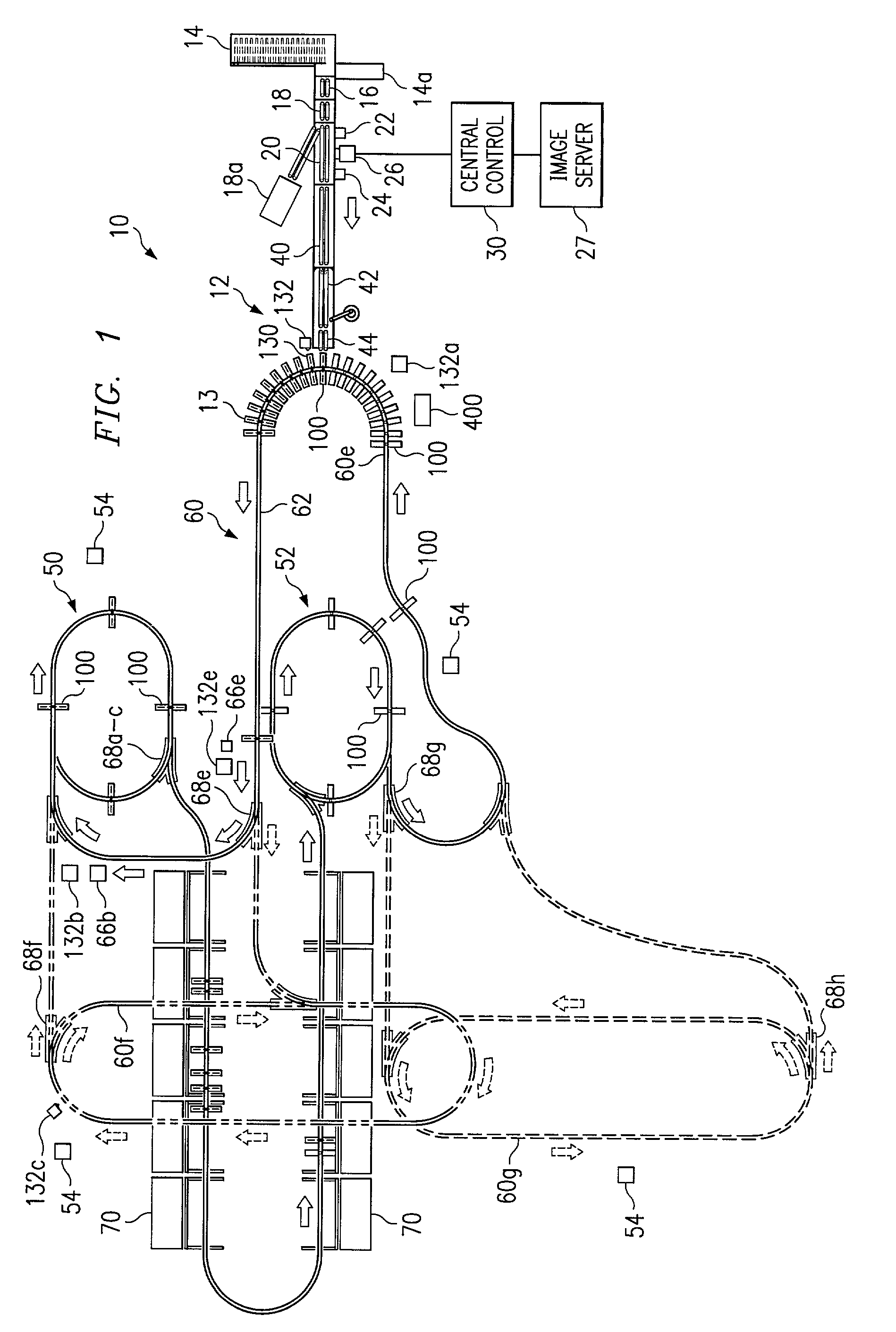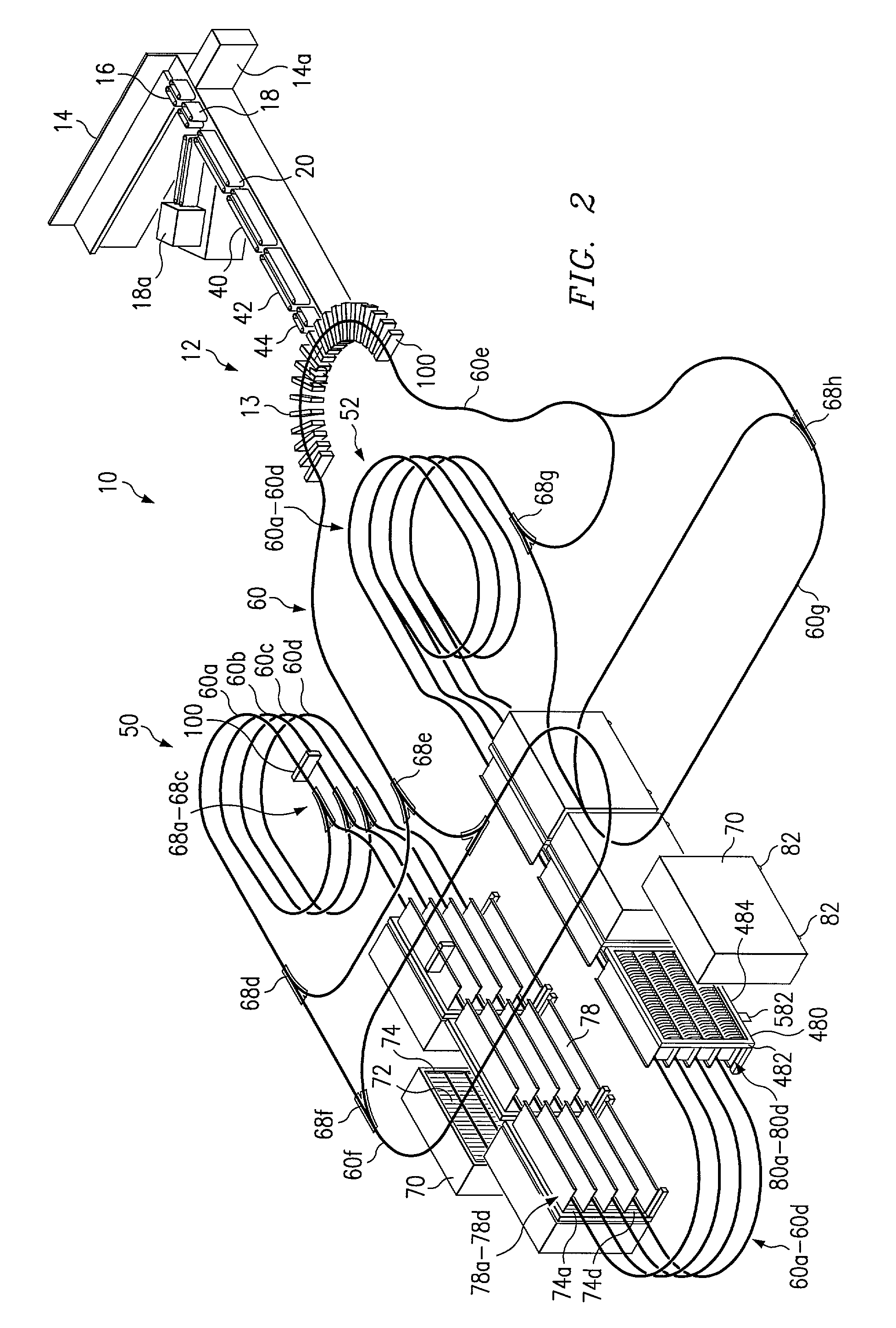Apparatus and method for mail sorting
a sorting apparatus and mail sorting technology, applied in the field of mail sorting, can solve the problems of inability to adapt to sorting, inconvenient transfer, and inability to sort mail into delivery orders, and achieve the effect of reducing the capacity of the slot and smooth transfer
- Summary
- Abstract
- Description
- Claims
- Application Information
AI Technical Summary
Benefits of technology
Problems solved by technology
Method used
Image
Examples
case 700
[0110]Case 700 contains a number of trays 730 which rest side by side on shelves 707, two in center section 702 and one each on wings 704. There are 4 trays per row, 16 total trays when 4 tiers are provided. Each tray comprises a flat bottom 732, a pair of opposed side walls 734 with handholds 735, and a back wall 736, leaving the front open. Shelves 707 may be slightly angled (e.g., about 1–20 degrees) in a rearward direction, so that when trays 730 are placed therein with the front side facing outward as shown, mail tends to remain in the tray by the force of gravity. Trays 730 may be made from molded plastic and fit precisely within the open front of case 700.
[0111]When case 700 is in position for sorting, mail is sorted directly to trays 730. For this purpose, trays may be provided with parallel partition walls that correspond to side walls 71 in case 70. However, this takes up additional space and prevents the mail from being easily removed from the tray 730 by the postal carri...
PUM
| Property | Measurement | Unit |
|---|---|---|
| flexible | aaaaa | aaaaa |
| widths | aaaaa | aaaaa |
| distance | aaaaa | aaaaa |
Abstract
Description
Claims
Application Information
 Login to View More
Login to View More - R&D
- Intellectual Property
- Life Sciences
- Materials
- Tech Scout
- Unparalleled Data Quality
- Higher Quality Content
- 60% Fewer Hallucinations
Browse by: Latest US Patents, China's latest patents, Technical Efficacy Thesaurus, Application Domain, Technology Topic, Popular Technical Reports.
© 2025 PatSnap. All rights reserved.Legal|Privacy policy|Modern Slavery Act Transparency Statement|Sitemap|About US| Contact US: help@patsnap.com



